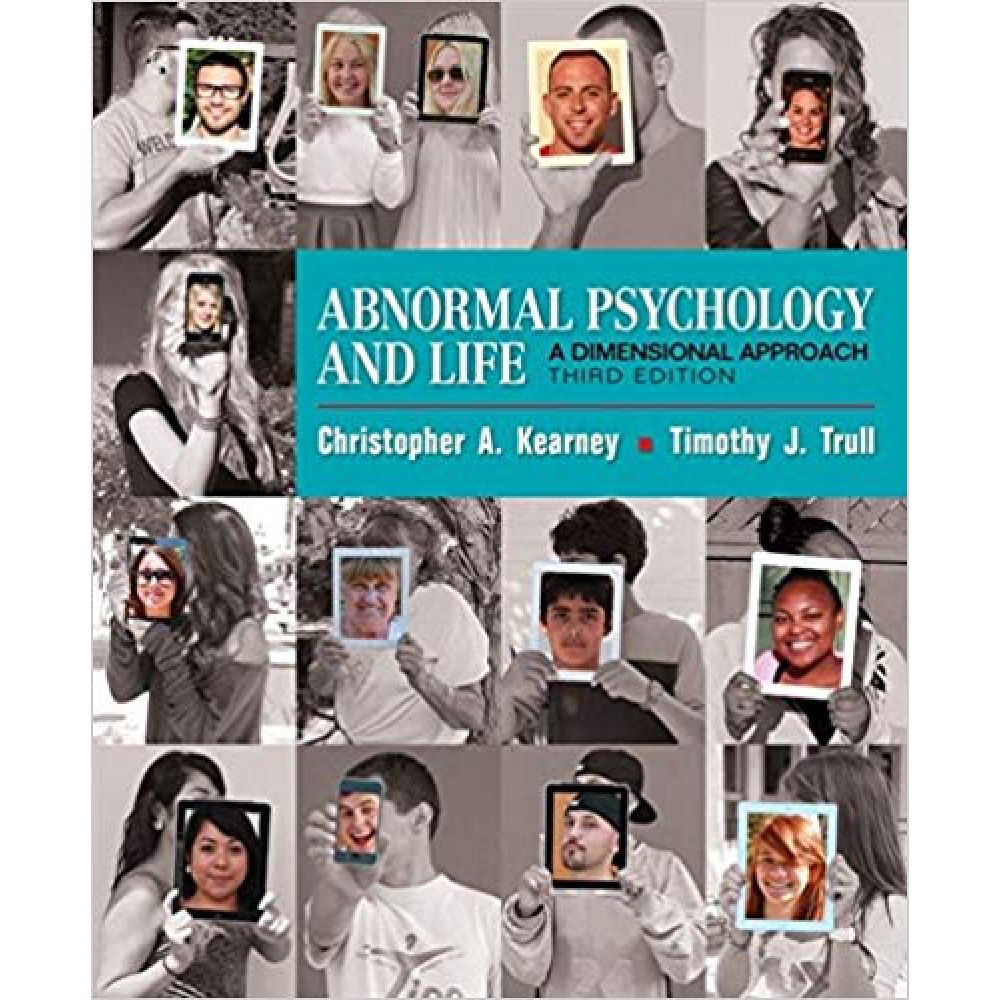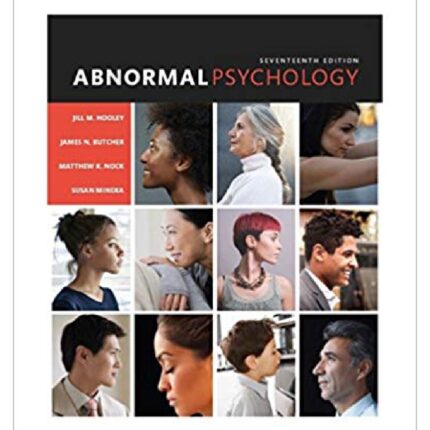Abnormal Psychology And Life A Dimensional Approach 3rd Edition By Chris Kearney – Test Bank
1. Problems that occur during the regular sexual activity are known as
a. sexual problems.
b. sexualis problemus.
c. sexual dysfunctions.
d. sexual perversions.
ANSWER: c
DIFFICULTY: easy
REFERENCES: Normal Sexual Behavior and Sexual Dysfunctions: What Are They?
OTHER: TYPE: factual
2. Regular sexual activity usually means a cycle of
a. wishing to have sex.
b. being constantly aroused.
c. achieving orgasm.
d. all of these choices.
ANSWER: c
DIFFICULTY: easy
REFERENCES: Normal Sexual Behavior and Sexual Dysfunctions: What Are They?
OTHER: TYPE: factual
3. Bianca is completely disinterested in sex. She has almost no sex drive. She is not married, and her boyfriend is also not really interested in sex. They enjoy each other’s companionship, but rarely engage in sexual activity. Does Bianca have a sexual dysfunction?
a. Yes, because her lack of interest in sex is causing her distress.
b. No, because her sexual functioning is very normal for her age and stage in life.
c. No, because her lack of interest in sex is not causing problems interpersonally.
d. Yes, because her disinterest is distressing to her boyfriend and causing interpersonal problems.
ANSWER: c
DIFFICULTY: moderate
REFERENCES: Normal Sexual Behavior and Sexual Dysfunctions: What Are They?
OTHER: TYPE: application
4. Sexual dysfunctions may involve all of the following EXCEPT
a. problems achieving orgasm.
b. difficulty maintaining sexual arousal.
c. low sexual desire.
d. unusual sexual behavior.
ANSWER: d
DIFFICULTY: moderate
REFERENCES: Normal Sexual Behavior and Sexual Dysfunctions: What Are They?
OTHER: TYPE: conceptual
5. Men experiencing a lack of sexual interest or desire might have a diagnosis of ____ disorder, whereas women who are not interested in sexual activity might have a diagnosis of ____ disorder.
a. delayed ejaculation; genito-pelvic pain
b. erectile; female orgasmic
c. male hypoactive sexual desire; female sexual interest/arousal
d. hypoactive sexual desire; hypoactive sexual desire
ANSWER: c
DIFFICULTY: easy
REFERENCES: Sexual Dysfunctions: Features and Epidemiology
OTHER: TYPE: factual
6. Sexual dysfunctions that begin after a time when a person has had no problem in sexual relations are known as
a. chronic.
b. acute.
c. acquired.
d. lifelong.
ANSWER: c
DIFFICULTY: easy
REFERENCES: Sexual Dysfunctions: Features and Epidemiology
OTHER: TYPE: factual
7. Sexual dysfunctions may be categorized as
a. generalized or situational.
b. partner-dependent or partner-independent.
c. specific or situational.
d. primary or secondary.
ANSWER: a
DIFFICULTY: easy
REFERENCES: Sexual Dysfunctions: Features and Epidemiology
OTHER: TYPE: factual
8. The female corollary to male hypoactive sexual desire disorder is female
a. sexual aversion disorder.
b. hypoactive sexual desire disorder.
c. hyperactive desire disorder.
d. sexual interest/arousal disorder.
ANSWER: d
DIFFICULTY: easy
REFERENCES: Sexual Dysfunctions: Features and Epidemiology
OTHER: TYPE: conceptual
9. A diagnosis of hypoactive sexual desire disorder would not be made if a person was unable to have sex or had other problems that prevented all sexual activity. Hypoactive sexual desire disorder refers to someone who
a. wishes to have sex outside that relationship.
b. simply does not desire to have sex.
c. wishes to have sex with multiple partners within the relationship.
d. simply does not desire to have sex with the opposite gender.
ANSWER: b
DIFFICULTY: easy
REFERENCES: Sexual Dysfunctions: Features and Epidemiology
OTHER: TYPE: factual
10. In order to receive a diagnosis of male hypoactive sexual desire disorder, symptoms must be present for at least
a. 1 month.
b. 3 months.
c. 6 months.
d. 12 months.
ANSWER: c
DIFFICULTY: easy
REFERENCES: Sexual Dysfunctions: Features and Epidemiology
OTHER: TYPE: factual












Reviews
There are no reviews yet.